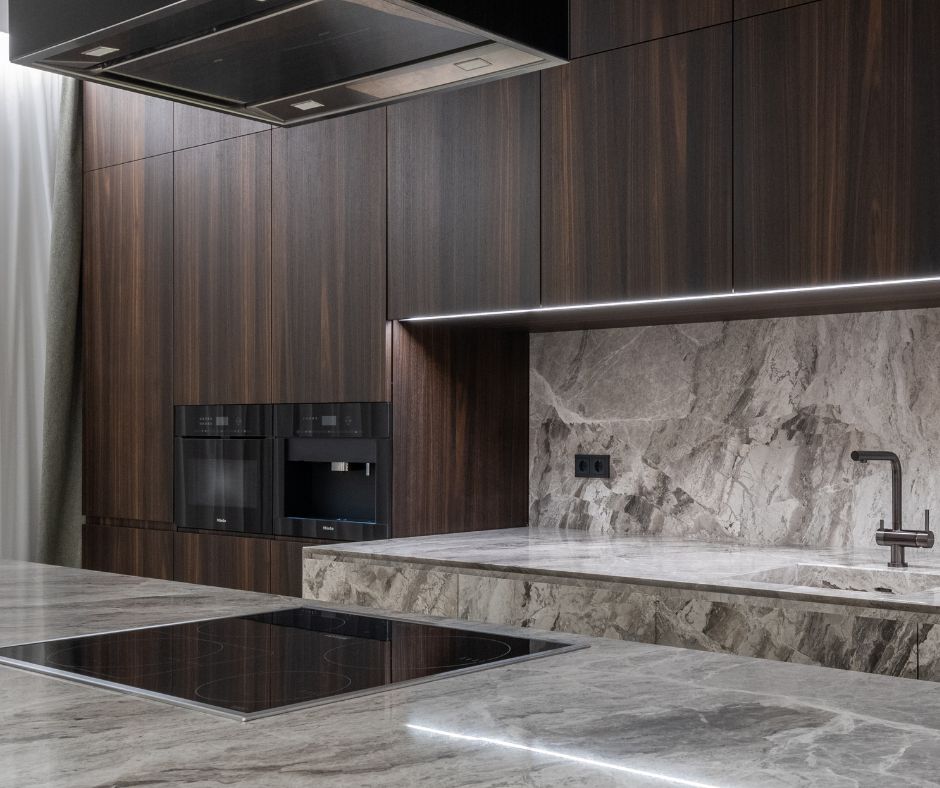Revolutionary kitchens create new culinary experiences. While induction cooking technology may appear to be a contemporary innovation, its roots extend back to the early 20th century. Captivating demonstrations from the 1930s showcased the astonishing capability to boil water using magnetic energy without any discernible heat source. However, it is only in the last few decades, driven by breakthroughs in technology, energy efficiency, and design, that induction cooktops have firmly established their presence in modern kitchens.
Today, a growing number of home cooks and culinary aficionados are embracing induction cooking for its striking blend of sleek aesthetics, remarkable precision, and unrivalled energy efficiency. This cooking approach not only accelerates meal preparation; it is transforming the culinary landscape, merging the art of heat management with creative cooking in every dish prepared on its chic, smooth surface. With the right induction cooktop, you can match the speed of a microwave in crafting delectable family meals!
Enhancing Taste and Nutritional Value Through Precise Cooking Techniques
Unlike traditional gas or electric stoves, induction cooktops heat cookware directly through electromagnetic energy. This state-of-the-art method eliminates energy wastage, prevents burnt edges, and offers superior control over both low and high cooking temperatures. With such precise heat management, your ingredients retain more of their natural moisture, flavours, and nutritional value. Whether you're quickly searing proteins, delicately simmering sauces, or swiftly blanching vegetables, induction cooking facilitates perfect outcomes, preventing overcooked dishes and nutrient loss.
Chic Induction Cooktops: Optimising Kitchen Space While Reducing Stress
In kitchens where every square inch is at a premium, induction cooktops shine not only in performance but also in visual appeal. Their flat, smooth surfaces effortlessly blend into your countertop, creating a minimalist look that maximises space for food preparation, plating, or even enjoying casual dining experiences.
Unlike traditional gas hobs, which feature bulky grates and protruding burners, induction cooktops sit flush with the countertop. Even though ceramic stovetops may offer a more refined appearance, they tend to remain dangerously hot long after cooking has concluded.
Conversely, induction surfaces cool down rapidly once the cookware is removed. The heat is generated through the magnetic interaction between the cooktop and the cookware itself, rather than from the cooktop, resulting in the glass surface retaining much less heat. This feature not only makes cleaning safer and simpler but also creates a more secure cooking environment—particularly advantageous for households with children or pets who may be curious about kitchen surfaces.
The result? A cooler kitchen with cleaner lines and greater versatility—perfect for modern cooks who value both aesthetics and functionality.

Comprehensive Guide to Choosing the Ideal Cookware for Induction Cooking
Making the switch to induction cooking may come with the bittersweet realisation that you might need to part ways with some beloved old pots and pans. Since induction technology relies on magnetic energy for heat production, not all cookware will be compatible with this method.
For cookware to work effectively on an induction cooktop, it must be constructed from ferrous (magnetic) metals, such as cast iron, carbon steel, or magnetic-grade stainless steel. A simple magnet test can determine compatibility: place a magnet on the bottom of the pan. If it adheres firmly, you're ready to cook.
When selecting new cookware, choose pans with a heavy, flat base. This design ensures maximum contact with the cooktop, providing even heat distribution, which is critical for achieving perfect browning, tender roasts, and crispy edges. Furthermore, high-quality induction cookware is engineered to resist warping over time, ensuring consistent cooking performance for every meal.
Although it may be difficult to let go of your cherished items, consider this transition an upgrade. In return, you will enjoy improved control, quicker cooking times, and dishes that boast even richer flavours and textures.
Induction Cookware Quick Checklist: Must-Have Items for Cooking Success
 Conduct a fridge magnet test—strong adhesion indicates induction compatibility
Conduct a fridge magnet test—strong adhesion indicates induction compatibility Opt for flat-bottom pans to ensure optimal contact and heat distribution
Opt for flat-bottom pans to ensure optimal contact and heat distribution Choose cast iron, carbon steel, or magnetic stainless steel cookware
Choose cast iron, carbon steel, or magnetic stainless steel cookware Avoid cookware made solely of copper, aluminium, or glass unless explicitly labelled for induction
Avoid cookware made solely of copper, aluminium, or glass unless explicitly labelled for induction Look for the induction symbol (resembling a horizontal coil or a series of loops) stamped on the base or packaging
Look for the induction symbol (resembling a horizontal coil or a series of loops) stamped on the base or packaging
Pro Tip: The induction symbol typically resembles a zigzag or spring coil graphic. Spotting it guarantees cookware compatibility.
Essential Installation Considerations for Your Induction Cooktop
Before you set out on your culinary adventure with your new cooktop, there are several installation essentials that must be prioritised:
-
Professional Installation Is Crucial: Induction units often require dedicated electrical circuits and specific clearances. Ensure you hire professionals who comprehend these requirements.
-
Consult a Licensed Electrician: Wiring a high-powered induction cooktop is not a DIY task.
Learn why engaging a qualified electrician is essential. -
Confirm Your Power Configuration: Some induction models consume significant power. Before making a purchase, ensure your wiring meets the cooktop’s specifications.
Proper installation not only guarantees optimal performance but also ensures safety and durability.
Key Insights About Induction Cooking
Induction cooking provides more than just speed or safety—it’s inherently intelligent. With the appropriate cookware and a professionally installed system, you can create meals that are better in taste, richer in texture, and healthier, meal after meal. In contemporary kitchens, precision cooking is not merely desired; it has evolved into the new norm.
Frequently Asked Questions Regarding Induction Cooktops
1. What Makes Induction Cooktops Better Than Gas or Electric Alternatives?
Induction cooktops offer instant heat control, enhanced energy efficiency, and improved safety features. Since they heat the cookware directly, meals cook faster and with less energy wastage, while the surfaces stay cooler, reducing the risk of burns.
2. Can I Use My Existing Pots and Pans on an Induction Cooktop?
Only if they are magnetic. Cookware made from cast iron or magnetic stainless steel is ideal. You can easily check compatibility by placing a magnet on the base—if it adheres firmly, it’s suitable for induction cooking.
3. Does Induction Cooking Impact the Flavour of Food?
Absolutely, and in a beneficial manner. Since induction cooking allows for precise temperature control, you can sear, sauté, or simmer without overheating, thus preserving the natural flavours, textures, and nutrients far more effectively than with erratic gas or electric heat.
4. Is Special Wiring Necessary for an Induction Cooktop?
Most induction cooktops require a dedicated electrical circuit and specific voltage and amperage configurations. It’s essential to have a professional electrician evaluate and install your wiring to ensure compliance with safety regulations and guarantee optimal performance.
The post The Secret Ingredient in Modern Kitchens: Induction Cooktops Are Changing the Game appeared first on https://cookinggods.com
The Article Induction Cooktops: The Game-Changer in Modern Kitchens Was Found On https://limitsofstrategy.com

